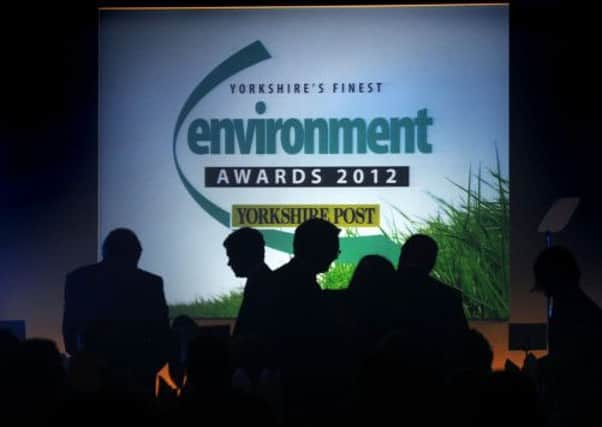Yorkshire Water to sponsor top prize


The company, a longstanding supporter of the event, is this year’s main sponsor, backing the coveted Environmental Business of the Year category. • Enter the Awards now
Head of environmental strategy Miles Foulger said the ethos of the awards, which champion the work being done to protect the region’s environment and tackle wider issues such as climate change, were at the forefront of everything the company did.
Advertisement
Hide AdAdvertisement
Hide Ad“As a water company, the environment is us. Whatever the environment does impacts on how much water we’ve got, where it is, the quality of the water, how many pollutants are in it and how much we’ve got to treat it,” he said.
Much of the company’s efforts have been focused on restoring the region’s peatlands over the last decade – which not only improves water quality in the reservoirs they surround but also helps to capture carbon and protect important wildlife habitats.
Millions of pounds have been invested in the project, which has included dropping cuttings of heather and other native moorland plants on land damaged by overgrazing, wildfires and controlled burning on grousing sites.
“About 40 per cent of our water comes from the Yorkshire moors, those iconic places like Brontë country, the Dales and the Peak District,” said Mr Foulger.
Advertisement
Hide AdAdvertisement
Hide Ad“Their health and future is really important to us because they’ve got a lot of peat. That’s been there for something like three and a half thousand years and if you don’t look after it it gives colour in the water and that’s quite expensive to remove.
“Conserving the uplands gives good landscapes but it also gives us good water management.”
The UK’s peatlands are already considered rarer than rainforest and now face a fresh threat from climate change, with increasingly warm and dry weather forecast over the next 50 years – the worst conditions for them to thrive.
Dried up areas of peat are estimated to release the equivalent of 10m tonnes of carbon dioxide every year – roughly equal to the emissions from a million households.
Advertisement
Hide AdAdvertisement
Hide AdMany of Yorkshire’s moorlands are designated Sites of Special Scientific Interest and are home to important bird species. They are also popular leisure and tourism destinations.
“We know how powerfully the landscape connects with Yorkshire people – it’s part of the identity of Yorkshire and one of the best things we do as a company is open all our catchments up for quiet recreation, for people to enjoy the peace and quiet of these special places, said Mr Foulger.
“The environment is good for business, it’s good for the region and it’s good for all of us as individuals.”
Working with farming tenants and landowners in Yorkshire Water’s catchments to protect the land and reduce levels of fertilisers and pesticides reaching its reservoirs is also high on the company’s environmental agenda.
Advertisement
Hide AdAdvertisement
Hide Ad“We have a concern about how nitrates in fertilisers and pesticides used on food get into our water sources,” said Mr Foulger.
“While we can remove them with water treatment work, we’re interested in how we can prevent them getting in through catchment management.
“Not building water treatment works means we don’t need treatment chemicals and we don’t need to use as much electricity.”
The company is further reducing its traditional energy consumption through innovative hydropower schemes and other renewable energy projects.
Advertisement
Hide AdAdvertisement
Hide Ad“Sewage going into our treatment works goes through an Archimedes screw, so when you are flushing a toilet in Bradford you are helping to generate electricity,” said Mr Foulger.
“The treatment process also generates a lot of sludge, which is an organic energy source, so there are a number of ways we can use that to generate electricity.”
Wind turbines built at the company’s Loftsome Bridge site near Howden and at Hull Waste Water Treatment Works at Saltend, are also helping to reduce its carbon emissions. Mr Foulger said: “We generate six per cent of our own electricity and we’re aiming for 18 per cent over the next couple of years.”